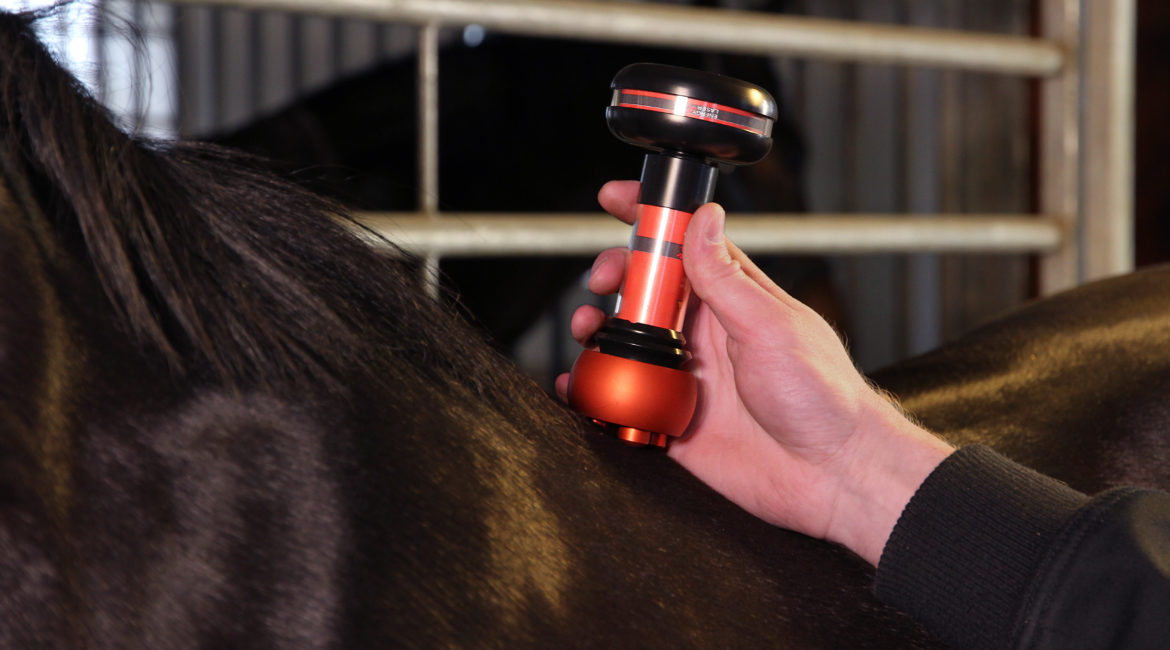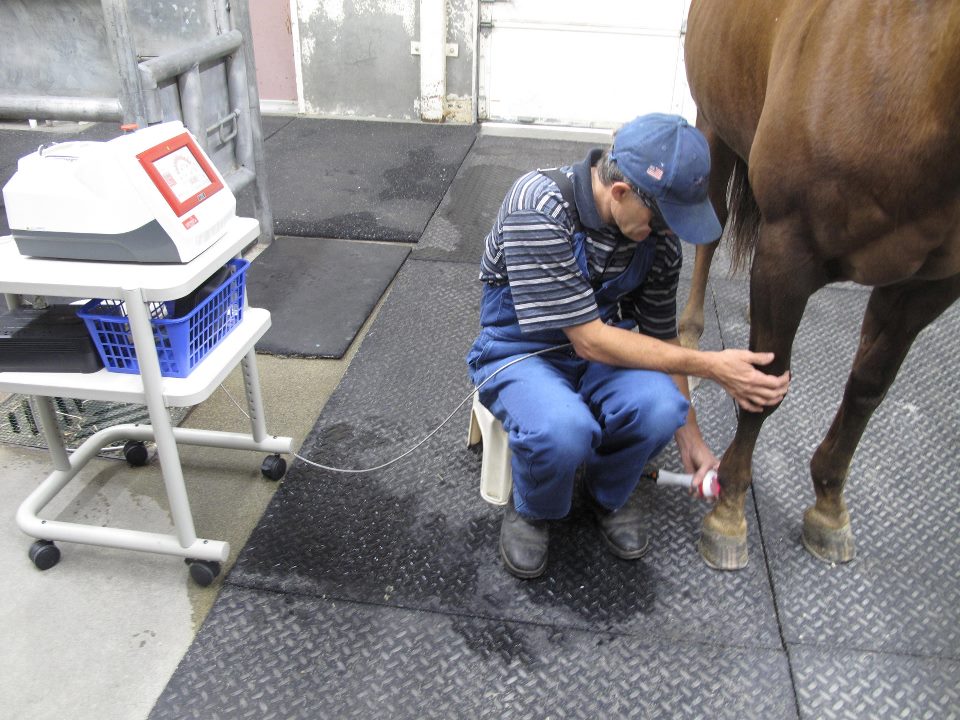Why Equine Therapy is Coming To Be a Preferred Alternative for Emotional Health
Why Equine Therapy is Coming To Be a Preferred Alternative for Emotional Health
Blog Article
Laser Treatment in Equine Treatment: A Modern Strategy to Improving Equine Health And Wellness
Laser treatment has become a pivotal method in equine therapy, making use of concentrated light energy to foster cellular repair service and quicken healing from a selection of disorders. This non-invasive strategy is particularly reliable in taking care of bone and joint injuries, wounds, and inflammatory conditions, substantially improving general horse health and wellness. By stimulating mitochondrial task and boosting ATP production, laser therapy not just enhances blood circulation yet likewise provides substantial pain alleviation. As this cutting-edge treatment continues to gain grip, it opens interesting possibilities for dealing with chronic problems like joint inflammation and hoof issues, signifying a transformative change in vet care. What makes this method specifically compelling?
Comprehending Laser Treatment
Laser therapy, a non-invasive therapy method, has gained significant grip in equine medication due to its efficacy in advertising healing and pain relief. This sophisticated restorative technique uses concentrated light power to pass through tissues, fostering mobile fixing and regrowth. The underlying mechanism includes the excitement of cellular mitochondria, causing boosted manufacturing of adenosine triphosphate (ATP), the power currency of cells. Improved ATP degrees speed up cells repair service processes and lower swelling, making laser treatment particularly efficient for treating bone and joint injuries, injuries, and other inflammatory problems in steeds.
There are several kinds of lasers utilized in equine treatment, each with certain wavelengths and power outputs customized to different restorative needs. Low-level laser therapy (LLLT), also referred to as chilly laser therapy, employs reduced power levels to stimulate cell function without triggering thermal damage. High-intensity laser treatment (HANDLE), on the other hand, makes use of higher power levels to achieve deeper cells infiltration and even more significant healing effects.
Veterinarians make use of various laser gadgets and strategies depending on the condition being dealt with and the desired deepness of cells penetration. Appropriate training and proficiency are crucial for making certain the risk-free and reliable application of laser treatment, thereby optimizing its restorative potential while reducing dangers.
Advantages for Horse Wellness
With a strong understanding of how laser therapy functions, it is crucial to discover its countless advantages for equine health. By stimulating mobile feature, laser therapy advertises faster wound recovery and help in the regrowth of damaged tissues.
Moreover, laser therapy has been shown to improve flow, thus boosting blood flow to impacted locations. Enhanced blood circulation makes certain that vital nutrients and oxygen are provided more effectively, helping with the recovery process. Furthermore, laser treatment's anti-inflammatory results aid in decreasing swelling and pain, which is vital for the total wellness of the horse.
Discomfort administration is one more significant advantage. By launching endorphins and obstructing discomfort signals, laser treatment gives effective, non-invasive remedy for both intense and chronic discomfort. This can add to improved movement and lifestyle for the animal.
Lastly, laser therapy is a non-invasive therapy choice, decreasing the danger of complications connected with even more intrusive procedures. Its convenience and effectiveness make it an indispensable device in contemporary equine vet medicine.
Typical Conditions Treated

Another prevalent condition treated with laser treatment is arthritis. Additionally, laser therapy is employed in the monitoring of wounds.
Equine respiratory conditions, such as recurrent air passage blockage (RAO), likewise react favorably to laser therapy. Laser therapy is useful in dealing with unguis troubles, consisting he has a good point of laminitis and abscesses.
Treatment and Security
Implementing laser treatment in equine therapy includes a precise treatment to guarantee both efficiency and security. Equine Therapy. The process begins with a detailed vet analysis to establish the suitability of laser therapy for the equine's particular condition. When deemed proper, the therapy area is prepared by cleaning and, if needed, clipping the hair to boost laser penetration
The expert needs to select the proper kind of laser, generally a low-level laser (LLLT) or a high-power laser (HPL), depending upon the condition being dealt with. The laser gadget is after that calibrated to the suitable wavelength, power, and period settings. Throughout the application, the specialist relocates the laser over the targeted location in a methodical way, ensuring constant and even exposure.
Security methods are strictly complied with, including making use of safety eyeglasses for both the expert and the equine. Additionally, it is important to keep an eye on the horse for any kind of signs of pain or damaging responses throughout the procedure. Post-treatment, the equine is frequently provided a duration of remainder to permit the therapeutic effects to manifest.

Future of Horse Laser Therapy
As developments in vet medicine continue to unfold, the future of equine laser treatment holds substantial promise. Arising technologies and deeper clinical insights are readied to refine and expand the applications of laser therapy for horses. One of one of the most anticipated growths is the assimilation of innovative imaging methods that permit much more specific targeting of damaged tissues, therefore boosting therapeutic results. In addition, the development of portable and straightforward laser devices is likely to make this treatment a lot more available to a wider series of experts and steed proprietors.
In addition, recurring research study right into the molecular and mobile devices of laser treatment will likely generate enhanced procedures tailored to particular problems, improving performance and minimizing treatment times. Individualized treatment strategies based upon hereditary and biochemical pens might come true, guaranteeing that each equine receives one of the most appropriate and effective treatment.
Additionally, regulatory developments and standardization of methods will certainly improve the reputation and integrity of laser therapy in equine method. Equine Therapy. As these advancements proceed to emerge, equine laser therapy is positioned to end up being an important component of vet visit their website care, offering improved recovery and boosted top quality of life for horses worldwide
Final Thought

Report this page